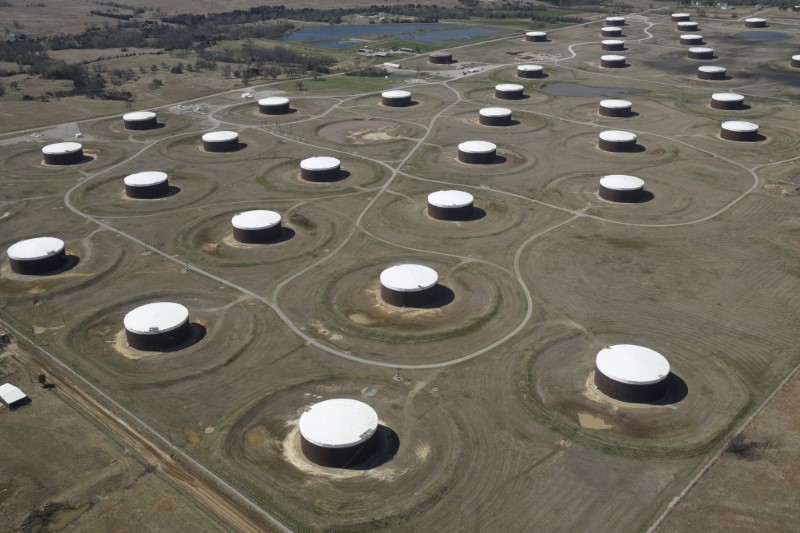 © Reuters. Crude oil storage tanks are seen from above at the Cushing oil hub in Cushing
© Reuters. Crude oil storage tanks are seen from above at the Cushing oil hub in CushingBy Henning Gloystein
SINGAPORE (Reuters) – Oil prices on Thursday hit their highest level since December 2014, lifted by a weak dollar and a 10th straight week of declines in U.S. crude inventories.
Brent crude futures (), the international benchmark for oil prices, were at almost $71 per barrel – $70.98 a barrel at 0232 GMT – a level not seen since early December 2014 and up 45 cents, or 0.6 percent, from their last close.
U.S. West Texas Intermediate (WTI) crude futures () climbed to $66.32 per barrel, also the highest level since early December 2014, and 1 percent above their last settlement.
Both crude benchmarks are up by almost 60 percent since the middle of last year.
Price support has also been coming from supply restrictions led by a group of producers around the Organization of the Petroleum Exporting Countries (OPEC) and Russia, which started last year and are set to last throughout 2018.
“The Saudi’s and Russians continue to work together to talk the oil market higher and last night, the countries’ two oil ministers said they were working together on other longer-term projects as well,” said Greg McKenna, chief market strategist at futures brokerage AxiTrader.
“That, and the USD fall, along with another inventory draw combined to drive (crude) up,” he added.
U.S. crude inventories
That’s the lowest seasonal level since 2015 and below the U.S. five-year average around 420 million barrels.
In foreign exchange markets, the U.S. dollar hit its lowest level since December, 2014 against a basket of other leading currencies ().
A weakening dollar often results in financial traders taking investment out of currency markets and into commodity futures like crude.
Analysts said that rising oil prices would likely start to have an inflationary effect.
“Higher oil prices will eventually be reflected in higher consumer prices as the costs of transport of most goods will rise,” said William O’Loughlin, investment analyst at Australia’s Rivkin Securities.
Looming over the generally bullish oil market has been U.S. oil production, which is edging ever more closely toward 10 million barrels per day (bpd), hitting 9.88 million bpd last week.
U.S. output has grown by more than 17 percent since mid-2016, and is now on par with that of top exporter Saudi Arabia.
Only Russia produces more, averaging 10.98 million bpd in 2017.
Fusion Media or anyone involved with Fusion Media will not accept any liability for loss or damage as a result of reliance on the information including data, quotes, charts and buy/sell signals contained within this website. Please be fully informed regarding the risks and costs associated with trading the financial markets, it is one of the riskiest investment forms possible.
Source: Investing.com


























